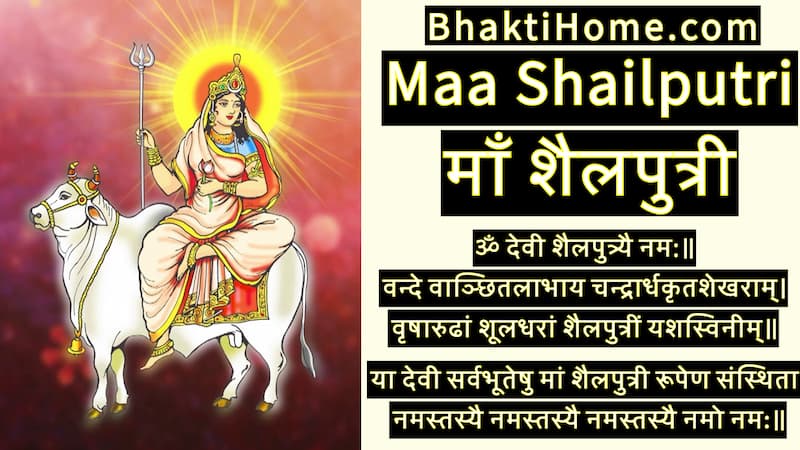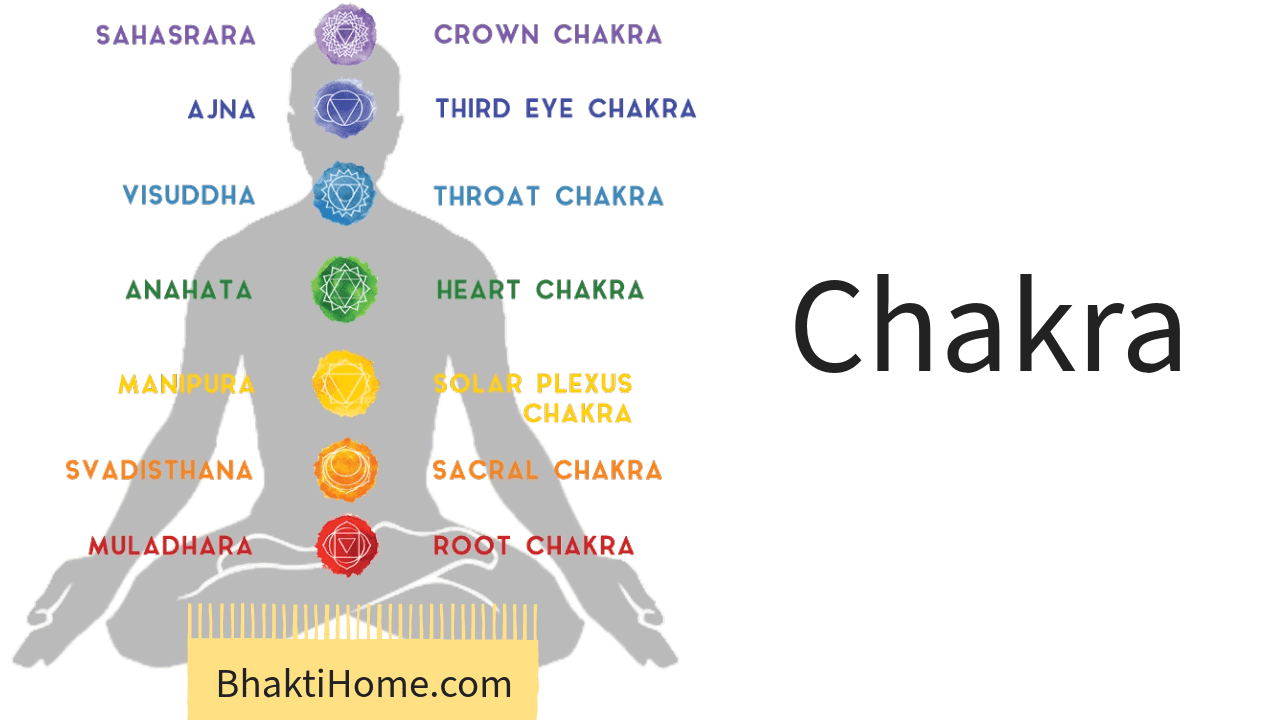
Maa Shailputri holds a prominent place among the forms of Goddess Durga. She is one of the Navadurgas and is venerated on the inaugural day of the Navratri festival.
Who is Maa Shailputri?
The name "Maa Shailputri" originates from the Sanskrit words 'Shail,' signifying mountains, and 'Putri,' denoting daughter. Therefore, 'Shailputri' translates to the daughter of the mountains. She is also recognized as Maa Sati Bhavani, Maa Hemavati, and Goddess Parvati. Another name for her is 'Pratham Shailputri,' as she is the first Devi of Navratri, worshipped on the auspicious occasion's initial day.
About Maa Shailputri | माँ शैलपुत्री
| Name (नाम) | Maa Shailputri (माँ शैलपुत्री ) |
| Alternate Names (वैकल्पिक नाम) | Hemavati, Parvati (हेमावती, पार्वती) |
| Maa Shailputri Vehicle (वाहन) | Taurus (वृष) |
| Maa Shailputri Weapons (शस्त्र) | Trishul (त्रिशूल) Trishul (Trident) in her right hand and a Lotus flower in her left hand. |
| Maa Shailputri Expression/Mudra (अभिव्यक्ति/मुद्रा) | Calm and joyful (शांत और आनंदमय) |
| Maa Shailputri Planetary Influence (ग्रह-प्रभाव) | Moon (चंद्रमा) This form of Mata Shailputri, a manifestation of Adi Shakti, governs destiny and mitigates any negative effects associated with lunar influence. |
| Maa Shailputri Stuti (स्तुति) | Ya Devi Sarvabhooteshu Maa Shailputri Roopen Sansthita, Namastasye Namastasye Namastasye Namo Namh. या देवी सर्वभूतेषु मां शैलपुत्री रूपेण संस्थिता। नमस्तस्यै नमस्तस्यै नमस्तस्यै नमो नम:॥ |
| Maa Shailputri Mantra (मंत्र) | Om Devi Shailaputryai Namah. ॐ देवी शैलपुत्र्यै नमः॥ Vande Vanchita labhay chandra ardha krita shekharam. वन्दे वाञ्छितलाभाय चन्द्रार्धकृतशेखराम्। |
Maa Shailputri Story
Goddess Shailputri holds a significant place among the various manifestations of Goddess Durga.
She is believed to be the daughter of King of Mountains, "Parvat Raj Himalaya." The name "Shailaputri" literally translates to the "daughter" (Putri) of the "mountain" (Shaila).
She is also known by several other names, including Parvati, Hemavati, Sati Bhavani, and the wife of Himavat, the ruler of the Himalayas.
In a previous incarnation, Maa Shailputri was born as the daughter of King Daksha and was named Sati. During her absence, King Daksha arranged for her marriage to Lord Shiva, a union that he vehemently opposed.
This led to King Daksha's anger and humiliation, causing him to sever all ties with his daughter, Sati.
The notion of Sati being wedded to Lord Shiva consumed Daksha, and his fury grew each day.
To vent his anger and disgrace, Daksha organized a grand Yagna and invited all the Gods, Goddesses, and even revered sages, but deliberately excluded Lord Shiva and Sati from the event.
Despite Lord Shiva's reluctance, Sati was determined to attend the Yagna, hoping it would provide an opportunity to reconcile with her parents.
While she lived happily in the Himalayas with Lord Shiva, it had been a long time since she had seen her parents. Sati insisted that Lord Shiva accompany her to the Yagna.
Upon reaching the Yagna venue, Sati's joy was short-lived as King Daksha publicly insulted Lord Shiva in front of all the guests present.
Unable to bear the humiliation of her beloved husband, Sati immolated herself in the Yagna's sacred fire. In her next birth, she was reborn as the daughter of Himavat and was named Himavati (Parvati).
Just as in her previous incarnation, in this life as well, she eventually married Lord Shiva after growing up.
Maa Shailputri Iconographic Insights
- With a calm visage and an enchanting air of mystique, Shailputri Mata is depicted seated atop Nandi.
- Maa Shailputri adorns her forehead with a crescent Moon and gracefully wields a Trident in her right hand while cradling a Lotus flower in her left.
Maa Shailputri Ruling Planet
- Maa Shailputri is also known as Pratham Shailputri or the First Goddess of Navratri, as she is revered on the opening day of the Navratri festival.
- As the primary deity of Navratri, Shailputri Mata receives profound devotion from her worshippers.
- Maa Shailputri governs over the planet Moon, and it is believed that worshipping her with pure intentions can ward off any adverse effects associated with the Moon.
Maa Shailputri Chakra Association
Goddess Shailputri is closely associated with the Muladhara Chakra, which is represented by the color pink. From a yogic perspective, the First Navratri holds immense significance as it marks the beginning of a devotee's spiritual journey.

- On this day, many devotees engage in meditation, mantra chanting, and special rituals to seek the blessings of Maa Shailputri and attain Siddhis (spiritual powers) and other divine boons.
- Shailputri Mata, as the embodiment of Muladhara Shakti, imparts profound life lessons by awakening an individual's self-awareness and highlighting the power of the Muladhara Chakra.
- The Muladhara Chakra, often referred to as the Base Chakra, is where our complete body consciousness resides. As a result, numerous individuals, including sages and gurus, observe fasting on this day and direct their full focus towards the Muladhara Chakra.
- This practice aims to connect with Shakti, gain awareness of the higher self, and gradually ascend in the spiritual realm—an awe-inspiring journey into the depths of one's soul.
- Maa Shailputri is the presiding deity of the Muladhara (Root Chakra). When this Chakra awakens, it commences its ascent as Shakti towards Shiva, who resides in the Crown Chakra (Sahasrara Chakra).
- This journey symbolizes the initiation of one's spiritual awakening and the pursuit of their life's purpose. Without the activation of the Muladhara Chakra, individuals may lack the vigor and resilience needed to confront life's challenges.
- Thus, during the first day of Navratri puja, yogis concentrate their thoughts on the Muladhara Chakra as it serves as the starting point in their spiritual journey.
- From a yogic standpoint, the First Navratri is a profoundly auspicious day, signifying the yogic commencement of alignment with the Divine Mother Durga and the empowerment of the Muladhara Chakra for balance and strength.
Worshipping Maa Shailputri: A Step-by-Step Guide
The significance of the first day of Navratri lies in the worship of Maa Shailputri, which commences with the ritual of 'Ghatasthapana.' She is the embodiment of Mother Nature, representing the Earth and all that resides within it.
- Ghatasthapana Ritual:
- Begin by installing an earthen pot with a wide mouth.
- Place the first seven types of soil, known as Saptamatrika, inside the pot.
- Sow seven types of food grains and barley seeds in the pot.
- Sprinkle water on the sown seeds until the soil is moist.
- Kalash Preparation
- Fill a Kalash with Holy water (Gangajal).
- Add Akshat (rice grains smeared with turmeric) to the water.
- Place five types of coins, along with Durva leaves, into the Kalash.
- Arrange five mango leaves upside down in a circular pattern around the brim of the Kalash.
- Gently position a coconut on top of the mango leaves.
- Invocation of Goddess Shailputri
- Chant the Pratham Shailputri Mantra, "Om Devi Shailputryai Swaha," 108 times.
- Offer prayers to Goddess Durga in the form of Shailputri, describing her divine attributes.
- Recitation of Aartis
- Recite the Durga Aarti and the Shailputri Aarti to honor the goddess.
- Panchopchara Pooja
- Perform the Panchopchara Pooja, involving the worship with five items.
- Start by lighting a ghee lamp.
- Burn dhoop sticks and offer the fragrant fumes to the Kalash.
- Present flowers and incense to the deity.
- Finally, offer Naivedyam, a dish made from fruits and sweets, to the Kalash as a sacred offering.
By following these steps, you can conduct the worship of Maa Shailputri with devotion and reverence on the first day of Navratri.
Benefits of Observing Maa Shailputri Puja
- Neutralizes Negative Moon Influences - Counteracts the malefic effects associated with the Planet Moon.
- Promotes Serenity, Unity, and General Well-being - Facilitates an environment of tranquility, harmony, and overall happiness.
- Protects Against Ailments and Negative Forces - Acts as a shield against diseases and wards off negative energies.
- Enhances Marital Harmony - Strengthens the bonds of love and understanding within married couples.
- Fosters Stability and Achievements in Professional Life - Contributes to stability and success in both career and business pursuits.
Maa Shailputri Mantra (माँ शैलपुत्री मंत्र)
ॐ देवी शैलपुत्र्यै नमः॥
Om Devi Shailaputryai Namah.
वन्दे वाञ्छितलाभाय चन्द्रार्धकृतशेखराम्।
वृषारुढां शूलधरां शैलपुत्रीं यशस्विनीम्॥Vande Vanchita labhay chandra ardha krita shekharam.
Vrsharudhaan Shooladharaan Shailaputren Yashasvineem.
Maa Shailputri Stuti Mantra (माँ शैलपुत्री स्तुति मंत्र)
या देवी सर्वभूतेषु मां शैलपुत्री रूपेण संस्थिता।
नमस्तस्यै नमस्तस्यै नमस्तस्यै नमो नम:॥
Ya Devi Sarvabhooteshu Maa Shailputri Roopen Sansthita,
Namastasye Namastasye Namastasye Namo Namh.
Maa Shailputri Aarti in Hindi (माँ शैलपुत्री की आरती हिंदी में)
शैलपुत्री माँ बैल असवार।
करें देवता जय जय कार॥
शिव-शंकर की प्रिय भवानी।
तेरी महिमा किसी ने न जानी॥
पार्वती तू उमा कहलावें।
जो तुझे सुमिरे सो सुख पावें॥
रिद्धि सिद्धि परवान करें तू।
दया करें धनवान करें तू॥
सोमवार को शिव संग प्यारी।
आरती जिसने तेरी उतारी॥
उसकी सगरी आस पुजा दो।
सगरे दुःख तकलीफ मिटा दो॥
घी का सुन्दर दीप जला के।
गोला गरी का भोग लगा के॥
श्रद्धा भाव से मन्त्र जपायें।
प्रेम सहित फिर शीश झुकायें॥
जय गिरराज किशोरी अम्बे।
शिव मुख चन्द्र चकोरी अम्बे॥
मनोकामना पूर्ण कर दो।
चमन सदा सुख सम्पत्ति भर दो॥
Maa Shailputri Aarti in English
Shailputri Maa Bail Asvaar,
karen devata jay jay kaar.
Shiv-Shankar kee priya Bhavanee,
Teri Mahima kisee ne na Jani.
Parvati Tu Uma kahalaaven,
jo tujhe sumire so Sukh paaven.
Riddhi Siddhi paravaan karen Tu,
Daya karen Dhanavaan karen tu.
Somvaar ko Shiv sang Pyaaree,
Aarti jisane Teri Utari.
usakee sagaree aas puja do.
Sagare duhkh takaleeph mita do.
Ghee ka sundar deep jala ke.
Gola garee ka bhog laga ke.
Shraddha bhaav se mantr japaayen.
Prem sahit phir sheesh jhukaayen.
Jay giraraaj kishoree ambe.
Shiv mukh chandr chakoree ambe.
Manokaamana poorn kar do.
Chaman sada sukh sampatti bhar do.

